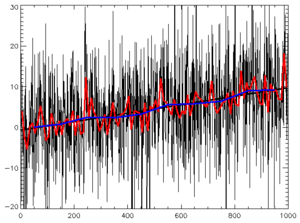 Image via WikipediaImplications of different approaches for characterizing ambient air pollutant concentrations within the urban airshed for time-series studies and health benefits analyses (26 page pdf, Matthew J Strickland, Lyndsey A Darrow, James A Mulholland, Mitchel Klein, W DANA Flanders, Andrea Winquist and Paige E Tolbert, Environmental Health 2011, 10:36, May 11, 2011)
Image via WikipediaImplications of different approaches for characterizing ambient air pollutant concentrations within the urban airshed for time-series studies and health benefits analyses (26 page pdf, Matthew J Strickland, Lyndsey A Darrow, James A Mulholland, Mitchel Klein, W DANA Flanders, Andrea Winquist and Paige E Tolbert, Environmental Health 2011, 10:36, May 11, 2011)Today’s review article examined the consequences in terms of health impacts in using a single centrally located urban air quality measurement compared to several measurements and how these measurements were weighted. Cautions are noted that centrally located monitors may indicate higher levels of pollutants than the average of several. When assessing health impacts of vulnerable subpopulations, such as the elderly and children, a weighting system that takes this into account would likely more useful than an unweighted average.
Key Quotes:
“For all the pollutants except PM 2.5 organic carbon, the mean at the central monitoring station was higher than the mean of the population-weighted average, reflecting the tendency for pollutants to be high near the urban core”
“the spatial distribution of pollutant concentrations was similar from one day to the next the three metrics were well-correlated over time”
“The rate ratios per unit increase were comparable across the metrics for pollutants with relatively homogeneous spatial distributions, whereas we observed larger differences for the pollutants with heterogeneous spatial distributions”
“the population-weighted average seems like it should be the better surrogate because the pollutant concentrations are weighted based on residence, an approximation that is probably better for retirees and children, who likely spend a substantial amount of time near their home, than it is for working-age adults who are more likely to be commuting into the city”
“Primary pollutants tend to have substantial spatial variability, and the sources of these pollutants (e.g., traffic) are often concentrated near the urban core”
“the distribution of results from studies that utilize central monitoring station measurements could be quite different from the distribution of results from studies that average measurements across monitoring stations”
Related articles
- Proximity to Traffic Air Pollution and Birth Outcomes (pollutionfreecities.blogspot.com)
- Modelling Exposure to Health Risks from Air Pollution (pollutionfreecities.blogspot.com)
- Traffic Air Pollution and Health Impacts in Urban Italy (pollutionfreecities.blogspot.com)
- Impacts of Nano Particulates from Urban Traffic on the Brain (pollutionfreecities.blogspot.com)

No comments:
Post a Comment